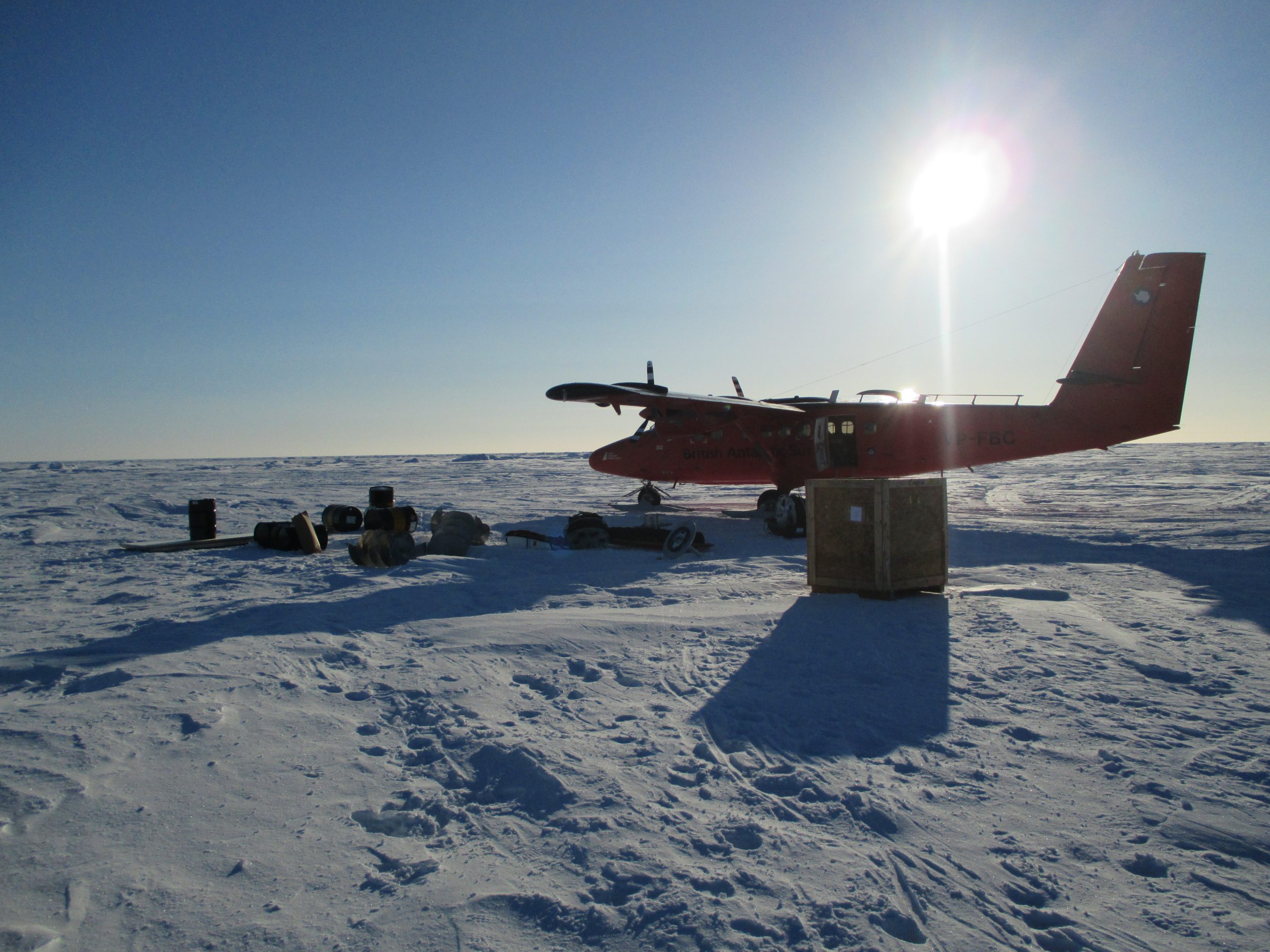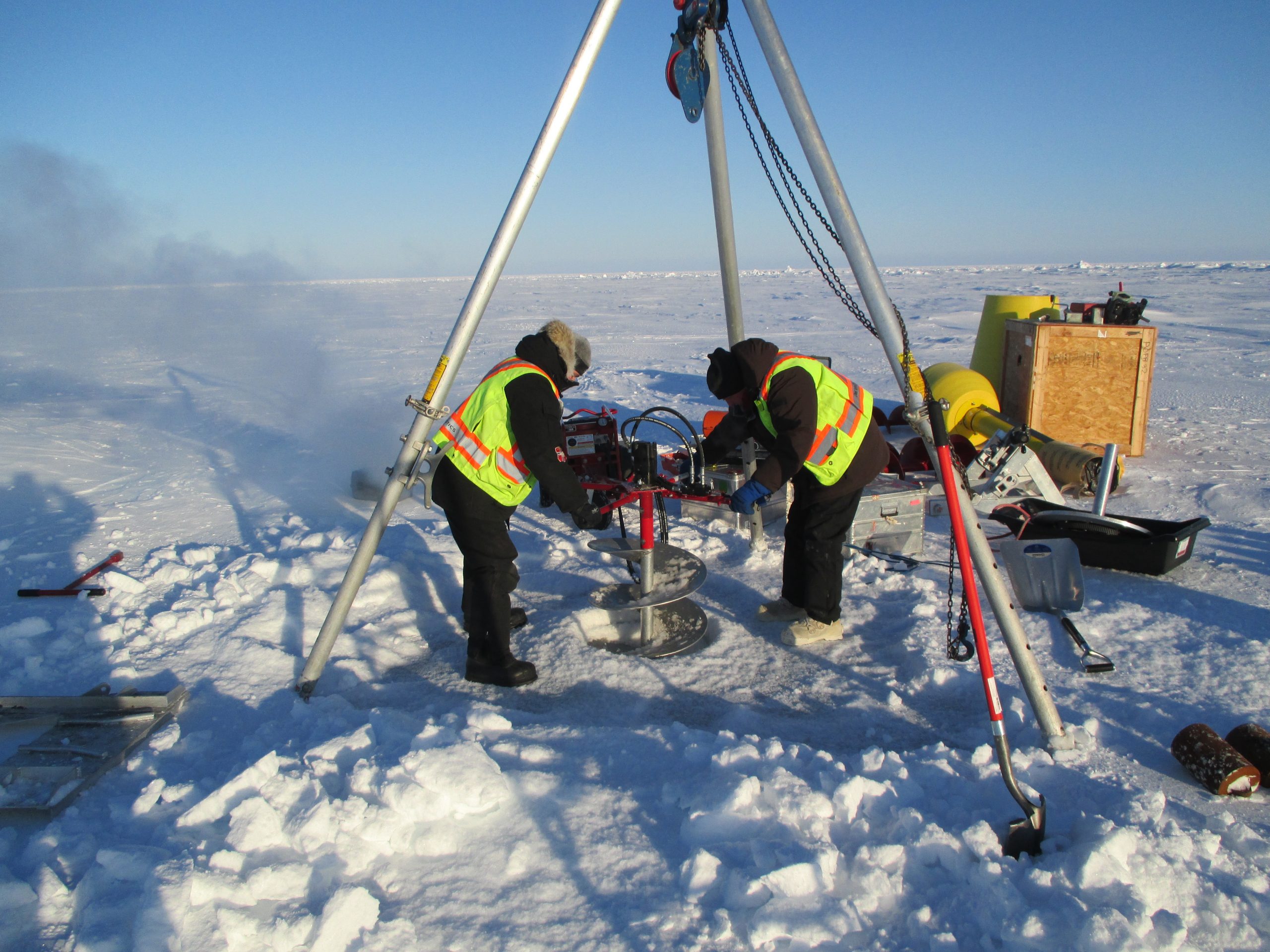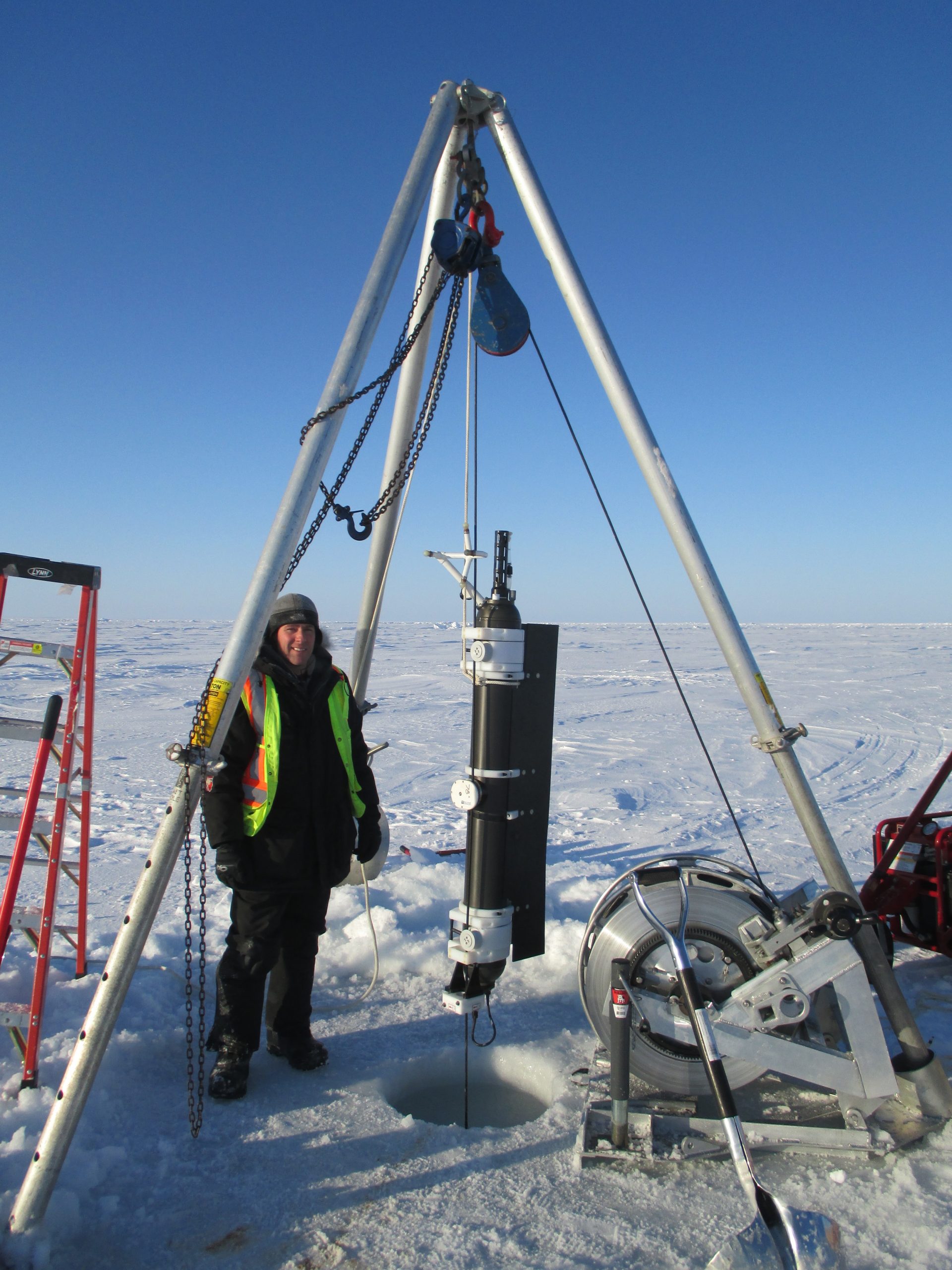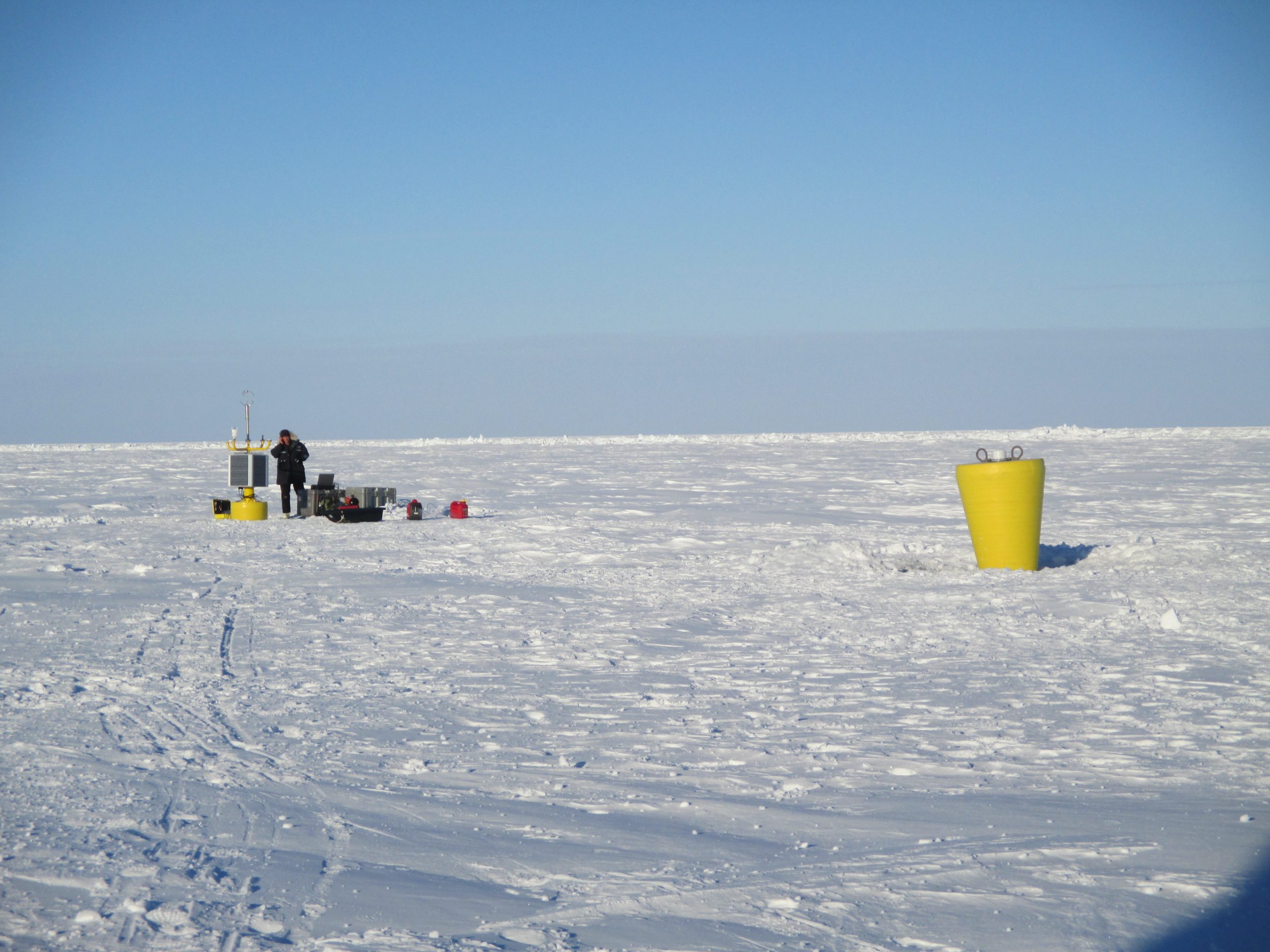ITP 77 Deployment operations
On March 7, 2014, MIZ ice camp and runway (C2) were established for deployment of MIZ-B array including ITP 77. The floe consisted of first year ice which was hard and very expansive making operating on the flow easier than if there were many ridges present. The next day was spent ferrying the needed deployment apparatus and handling gear to C2 (Camp 2) ice flow from Sachs Harbour using British Antarctic Survey (BAS) Twin Otter aircraft. Due to the load capacity of the Otter, two trips were needed. On March 9, 2014, the ITP surface package, profiler, Microcat and AOFB were brought to the ice. These instruments were left back at Sachs in order to keep warm until deployment operations began.
Because the hole size through the ice needed to be 24” (to accommodate the diameter of the MAVS ITP), care had to be taken to start and warm the hydraulic power pack and assemble the portable cutting head immediately. A battery charger was brought to assist with starting the electric motor due to temperatures averaging -30C. The tripod was also setup to help with carrying the weight of two 24” flights & the cutting head during drilling. The cutting took approximately 10 minutes with the ensuing winch/wire assembly and deployment took another 3 hours to complete.
Adjacent to the ITP (roughly 50’), AOFB 33 was deployed. A 14” flight assembly and hydraulic power pack were used in order to cut the hole in order to fit the sub-ice ADCP and microcat mechanical assembly through the ice. Using the tripod, the lower SS sections were lowered first then once the electrical connections were made, the surface buoy was slid into the hole using 3/8” synthetic line. An atmospheric top section was then added to the buoy.



